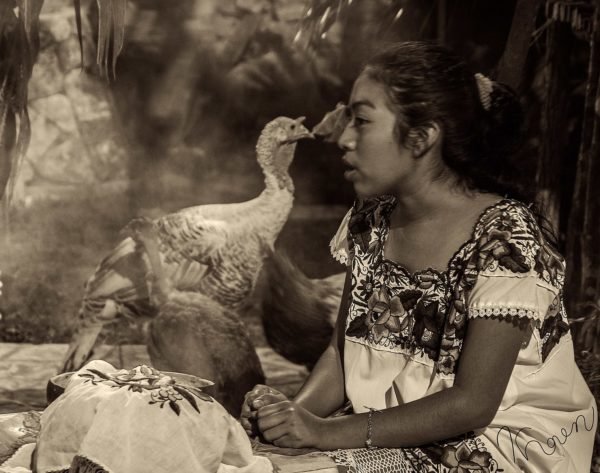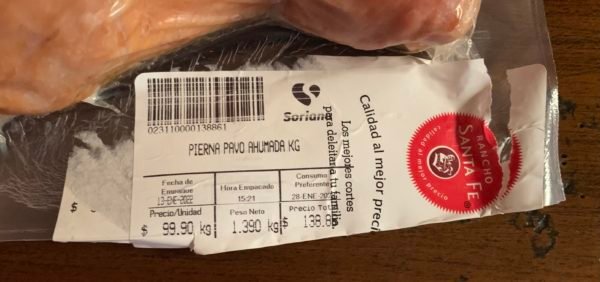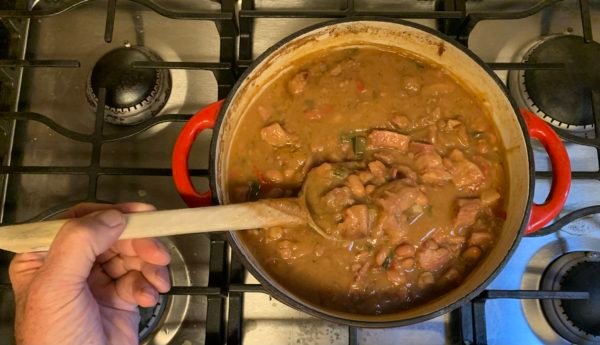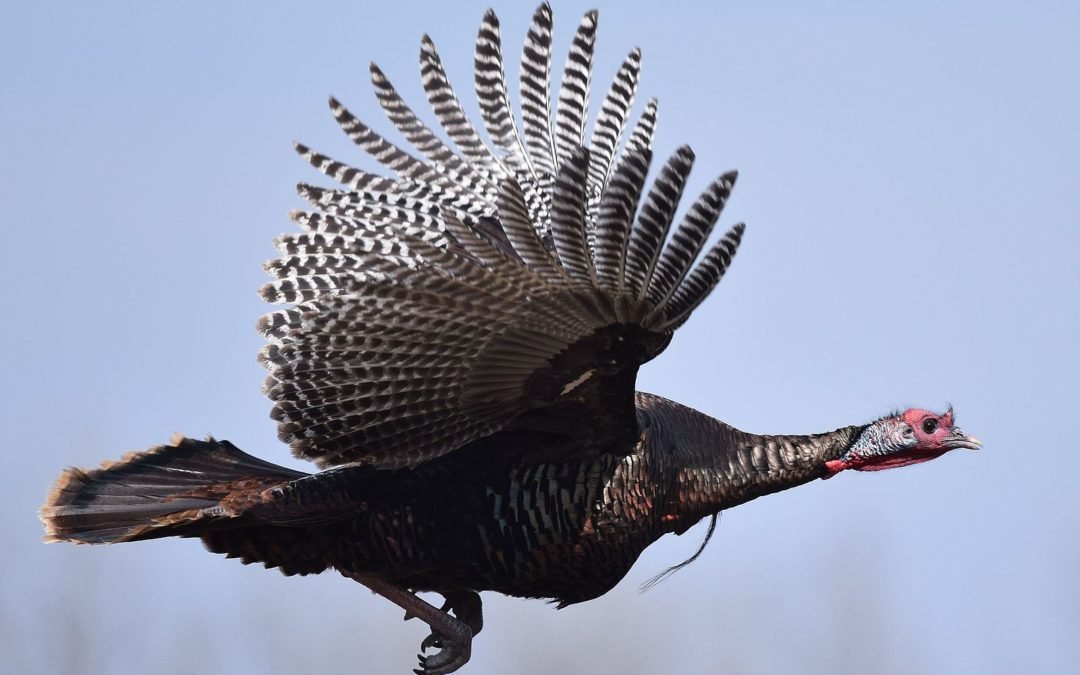You’ll rarely ever see them in a supermarket. And when you do, they’re almost always frozen and imported. Yet this is the country where they had their beginnings. Meleagris gallopavo, the wild turkey, is native to Mexico. And when the Spanish arrived here, turkeys had already been domesticated.

So how’d they get the name “turkey”? Well, my best guess is that the world’s most active merchants of the time, the Turks, who had introduced the guinea fowl to Western Europe, soon became involved in the distribution of the rival bird there.
So why isn’t the turkey more popular in Mexico? Why is it that about the only time you’ll see the full carcasses is in December? It’s certainly not that poultry isn’t popular; 60% of the meat consumed in Mexico is poultry. And that’s despite it being more expensive than pork.
Well, turkey actually is quite popular. In 2019, Mexico imported 400,000,000 pounds of turkey from the U.S. alone. But this turkey just doesn’t look like turkey.
Head over to Bodega Aurerra, the name in Mexico for Walmart box stores; then check out their processed meats section. Then check the ingredients. You’ll find most of the ham, the bologna, the pastrami, the sausage, the chorizo, the hot dogs, the bacon, is made not from pork but turkey. I don’t know of any other country where it’s so popular. And I hate to admit but I don’t know why.
What I do know though is I don’t think turkey ham tastes as good as ham made from pork thighs. Or turkey bacon as good as bacon made from pork bellies. Or…well you get the point.
There is one processed turkey product though that is one of my favorite of all…yes all…meats to eat. And it’s readily available in Mexico.
Processed may be not quite the right word. This product isn’t finely ground and shaped into logs or blocks. This product actually looks like the part of a turkey that it is, the leg. And the only processing I know of is brining and smoking.

You’ll find these size XL drumsticks in the freezer chests of San Miguel supermarkets Soriana and La Comer with the name-tag pierna pavo ahumada. On that tag, you’ll also see a price of around a hundred pesos a kilo which is cheaper than virtually any other meat in the store.

So what do we…sorry, that should be what does Don Day’s Wife…do with these pechugas pavo ahumadas? Well if you use smoked pork hocks in any recipe, try replacing them with smoked turkey legs.

My favorite recipe is when Don Day’s Wife simply adds the sweet, smoky leg to her pot of beans. Here are the details from Don Day’s Wife:
“I put a couple of cups of beans into a large pot, with about 8 cups of water, a chopped onion, a chopped poblano pepper, a couple of tablespoons of cumin, and a tablespoon of smoked hot paprika. After the beans have simmered for a couple of hours, I remove the skin and fat off the turkey leg, cut the meat into small chunks, and add the meat (and the bone) into the simmering beans. I add a cup of chicken stock and more water if necessary until the beans are tender. I then remove the bone and serve topped with chopped cilantro, chopped green onion, chopped jalapeno, and, sometimes, crumbled cotija cheese.”

A pechuga pavo ahumada generally weighs in at around a kilo and a half. You’ll have about a kilo of goodness available when you peel off the skin and strip the meat from the bone. In the beans dish, that’s enough for about six, maybe eight people. At about 15 pesos a person, I really can’t think of a better-priced piece of meat.
And, to think, it all started in Mexico.


Great post on my way to La Comer to get some drumsticks! Just what we need to keep us busy. Just made a killer chicken soup with the pre cut veg package,stock, poblanos, onions,cumin and smoked paprika. A soup party is on!
Thanks, I love this !
Since I cook for one, I buy “pechuga de pavo” in the Meat department, fresh, frequently at LaComer. I bake it in my toaster oven and it’s like having Thanksgiving Dinner all over again. GREAT value too.
I was astounded on a trip to Guatemala to see turkey served in many ways on nearly every menu while traveling around the country! So tasty and nutritional…….
Great recipe. In an Instantpot the time drops to less than an hour. But recommend sautéing the leg in a pan separately.